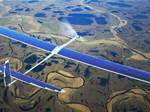


The company’s open source AI software is an armchair explorer’s dream.
In December, Google and NASA researchers announced they’d found two new exoplanets using a neural network.
Now, the code used to make the discovery has been released for free.
“We hope this release will prove a useful starting point for developing similar models for other NASA missions, like K2 (Kepler’s second mission) and the upcoming Transiting Exoplanet Survey Satellite mission,” Chris Shallue, a Senior Software Engineer at Google, wrote on the company’s Research Blog.
Researchers can now use (and adapt) the computer code to look for new worlds hidden in the vast reams of data gathered by the Kepler space telescope.
The Kepler mission—and its successor, K2—hunt for exoplanets by looking for twinkles in the sky. When a planet passes between a star and a telescope, it creates a tell-tale temporary dimming. Between 2009 and 2013, when the Kepler mission ended, the telescope continuously watched about 150,000 stars, staring resolutely at a single patch of sky.
Researchers have confirmed the existence of 2,342 exoplanets using Kepler data, but there’s still a lot to go through. On the github page for the Google code, the researchers note that there are over three million files (one terrabyte) of Kepler data, which can take up to a week to download completely. It’s easier to look at the data in smaller chunks, which is how the Google team found the two exoplanets in the first place.
Automated software looks for those dips in light that might indicate a swiftly passing planet, which narrows down the data pool considerably. But astronomers still have to manually check that data to confirm the existence of a planet. Understandably, they focus on the most likely candidates, which leaves a lot of data unexamined. That’s where the neural network developed by Google comes in, taking another look at signals the automated software might have missed, and flagging likely candidates.
The Google program isn’t perfect. It can still mistake binary stars or other stellar phenomena for planets, and it is still being developed.
A similar approach has already been used for a while, but instead of using a machine brain, researchers turned to human brains all over the world, releasing Kepler data to projects like Exoplanet Explorers and Planet Hunters which let citizen scientists look through data and flag potential planets for astronomers to look at more closely.
Scientists just discovered a multi-planet system using the crowdsourcing approach in January.
Other data sets are increasingly becoming more accessible as the search for exoplanets continues. Earlier this year a group of universities released a large dataset of stars accumulated over 20 years by the ground-based W.M. Keck Observatory, which is also looking for exoplanets.
Whether you’re satisfied hearing about exoplanet discoveries after the fact, or you’d like to try your brain (or your computer’s) at discovering one for yourself, the search for exoplanets is only getting bigger. Things are likely to ramp up even more after next month’s launch of NASA’s Transiting Exoplanet Survey Satellite (TESS) which will look at 200,000 bright stars near our sun to see which might be similar to our own solar system.
What unknown worlds might be hiding near nearby stars? We’ll never know until we take a look.

EDITOR'S PICKS











